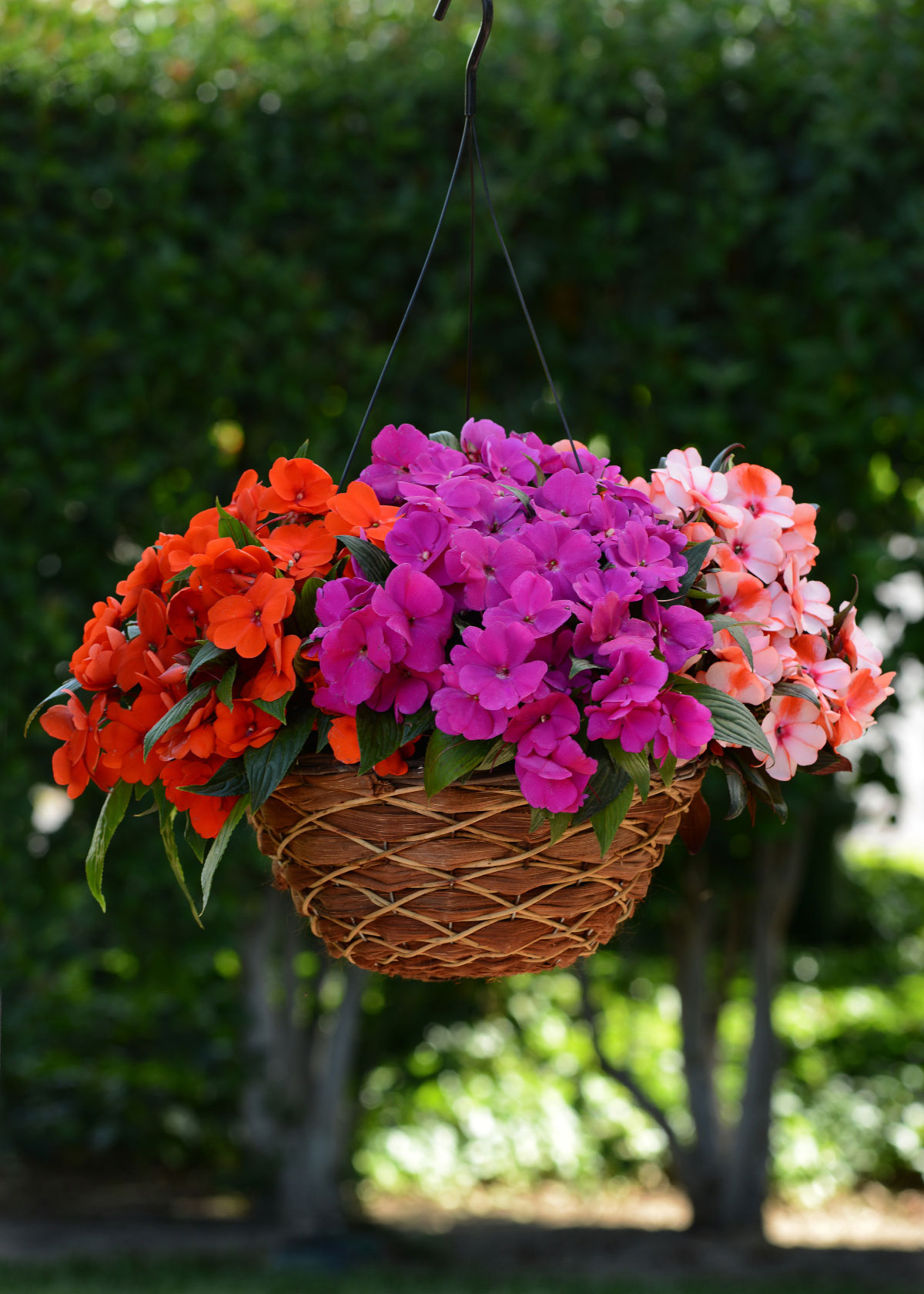Thanks to the new, highly disease-resistant bedding impatiens summer gardens can once again be filled with these easy-flowering, colourful shade lovers.
Similar to disease-resistant impatiens: Disease-resistant roses
Remember when summer shade gardens were ablaze with impatiens? The spread of the fungal disease downy mildew put an end to that, and despite the introduction of interspecific hybrids, nothing quite filled the gap.

NEW GENERATION IMPATIENS
That gap has now been filled by two new-generation Impatiens walleriana varieties, Beacon and Imara, which deliver the same bold, bright colour of the original busy Lizzies.
Both of these are described as highly disease resistant. In all respects, they mimic the traditional walleriana impatiens as fast-filling compact bedding plants, with a similar flower size and flowering season from early summer until the first frost.
BEACON

Growing 25–30cm high and wide, the colours in this range include bright red, salmon, white, violet, orange and coral. New shades will be introduced annually. Plants are identifiable in stores by a colourful Beacon label.
IMARA

Compact and floriferous, Imara has a similar colour range that extends to ‘Rose’ and even one with an orange star. Both varieties do best in shade to semi-shade and should be planted in well-composted soil. Apart from regular watering and feeding with a liquid fertiliser once a month, they don’t require any special care.
OTHER IMPATIENS
When downy mildew struck eight years ago, the alternatives were the larger New Guinea varieties that were immune to the disease. They also formed the basis for interspecific breeding programmes that resulted in hybrids that could be used in beds, containers and hanging baskets. Each has their own specific characteristics.
SUNPATIENS

One of the first interspecifics, it’s known as the ‘all weather impatiens’ as it puts on a display in summer through to the first frosts. Plants are robust enough to grow in full sun or partial shade. This compact series grows up to 35cm high and wide, making it a good alternative for beds that receive a bit more sun as well as containers. The larger series grows up to 70cm high, is suitable for landscapes, towards the back of a border, large containers. Plant them in full sun and water daily in summer. They are forgiving plants – the beauty of all impatiens. If they flop from a lackof water, they’ll bounce right back after watering.
CLOCKWORK

An upgrade of the Celebrette New Guinea pot impatiens (I. hawkeri), Clockwork has the ideal compact growth (25cm high and 30cm wide) for patio containers and planters and performs equally well in beds. It comes in a wide colour range, including two-tone ‘Pink Star’ and ‘Orange Stripe’. Plant them in a good quality potting mix, with a controlled-release fertiliser. The best position has morning sun and afternoon shade or good, dappled light. Water pots once a day in midsummer and feed with a liquid fertiliser once a month.
DIVINE

This New Guinea landscape variety has the largest colour range of all and includes soft colours such as lavender, pearl, soft pink as well as some brighter shades. It’s compact and quick-growing and supplied in seedling trays in single colours or mixes. These make a show, especially in a large bed, as an edging and in hanging baskets.
What is downy mildew?
This is caused by an Impatiens host-specific water mould, Plasmopara obducens. It develops rapidly in moist rainy weather where there is high humidity and night temperatures are cool. As a result, leaves tend to stay moist for longer, which encourages the growth of spores. Downy mildew had such a devastating impact because it is easily spread by wind as well as splashing water. Spores are also able to overwinter in the ground and reinfect impatiens when the weather warms up.

What does highly disease-resistant mean?
The term is used for plants that may show symptoms of disease, especially when under pressure from adverse weather conditions, but continue to live and thrive. Leaves may be dropped or discoloured, but plants don’t die. Downy mildew is a threat to varieties that aren’t resistant.
TRIALLED AND TESTED
Trials conducted at Ball Straathof in Jo’burg, and various other locations around the world, have shown Beacon to be the more resistant variety at present.
“Susceptible Super Elfin varieties were planted in between Beacon and Imara in October,” explains Kathy Varney, product manager at Ball Straathof. “By January, the Super Elfin varieties had downy mil-dew, and by the end of February, they’d been decimated. Imara showed downy mildew spores on the leaves and dropped the lower leaves, but they kept their flowers. Beacon never showed any spores and maintained their neat habit. Both the resistant varieties continued flowering into the colder months.”

